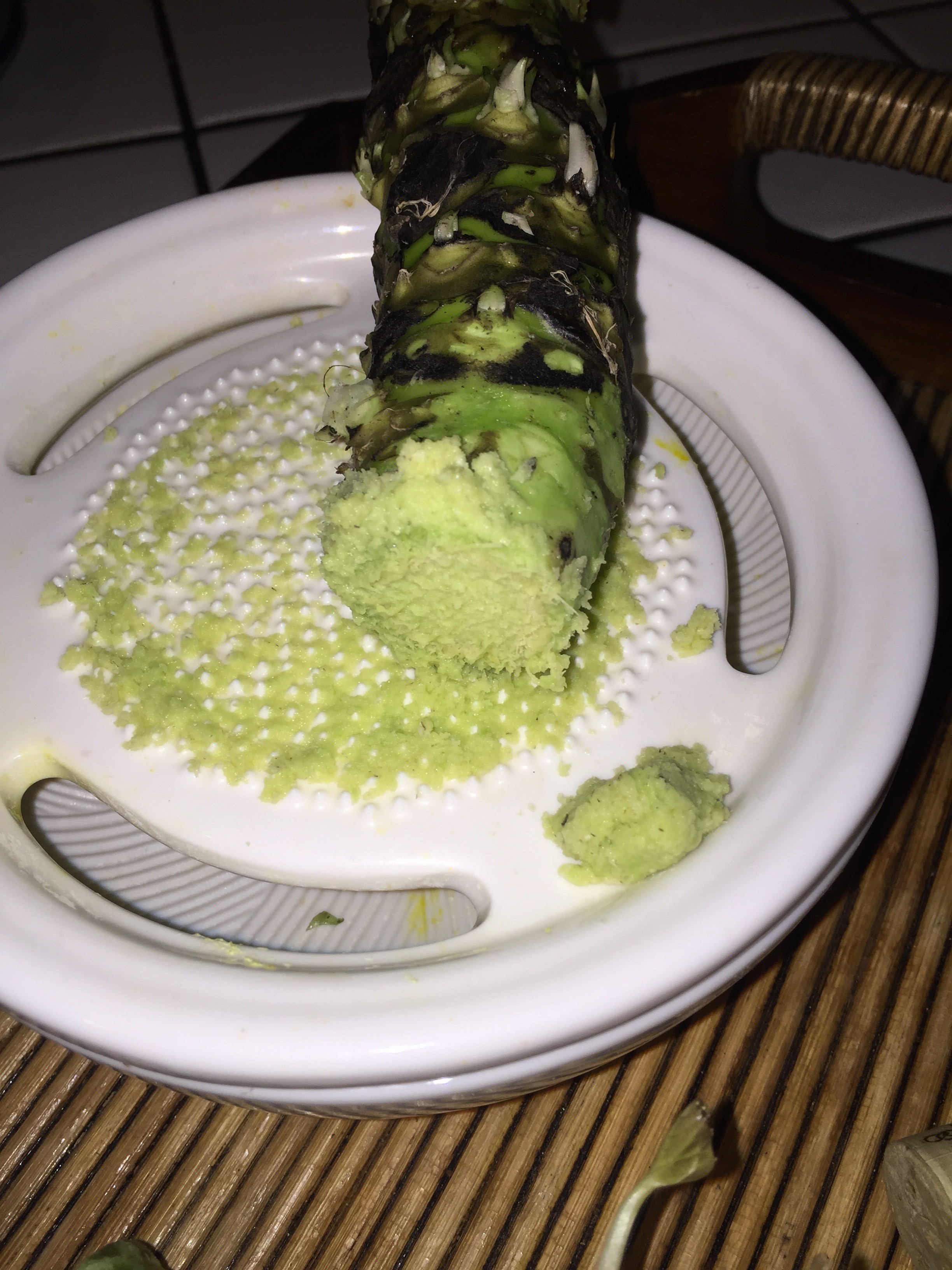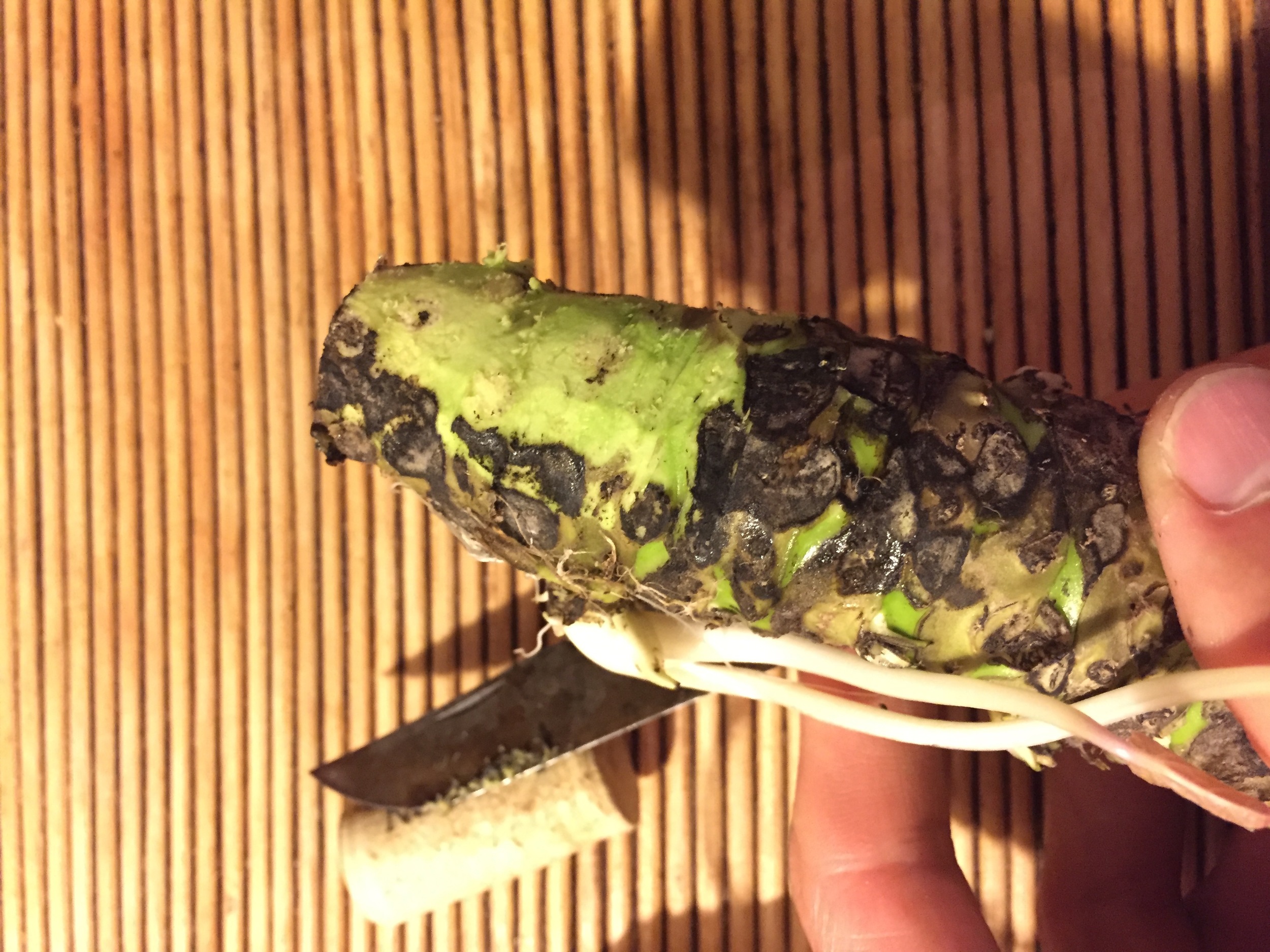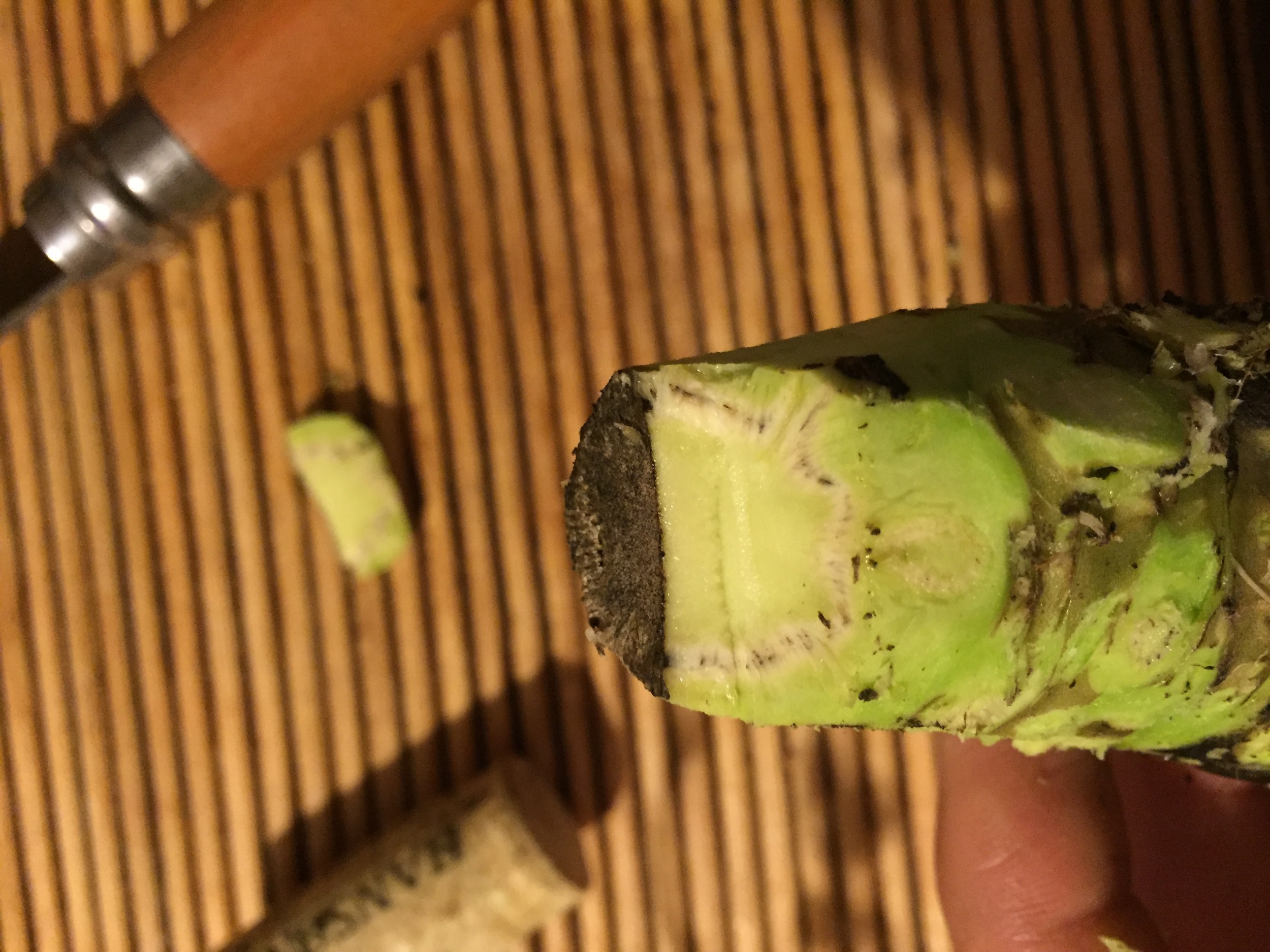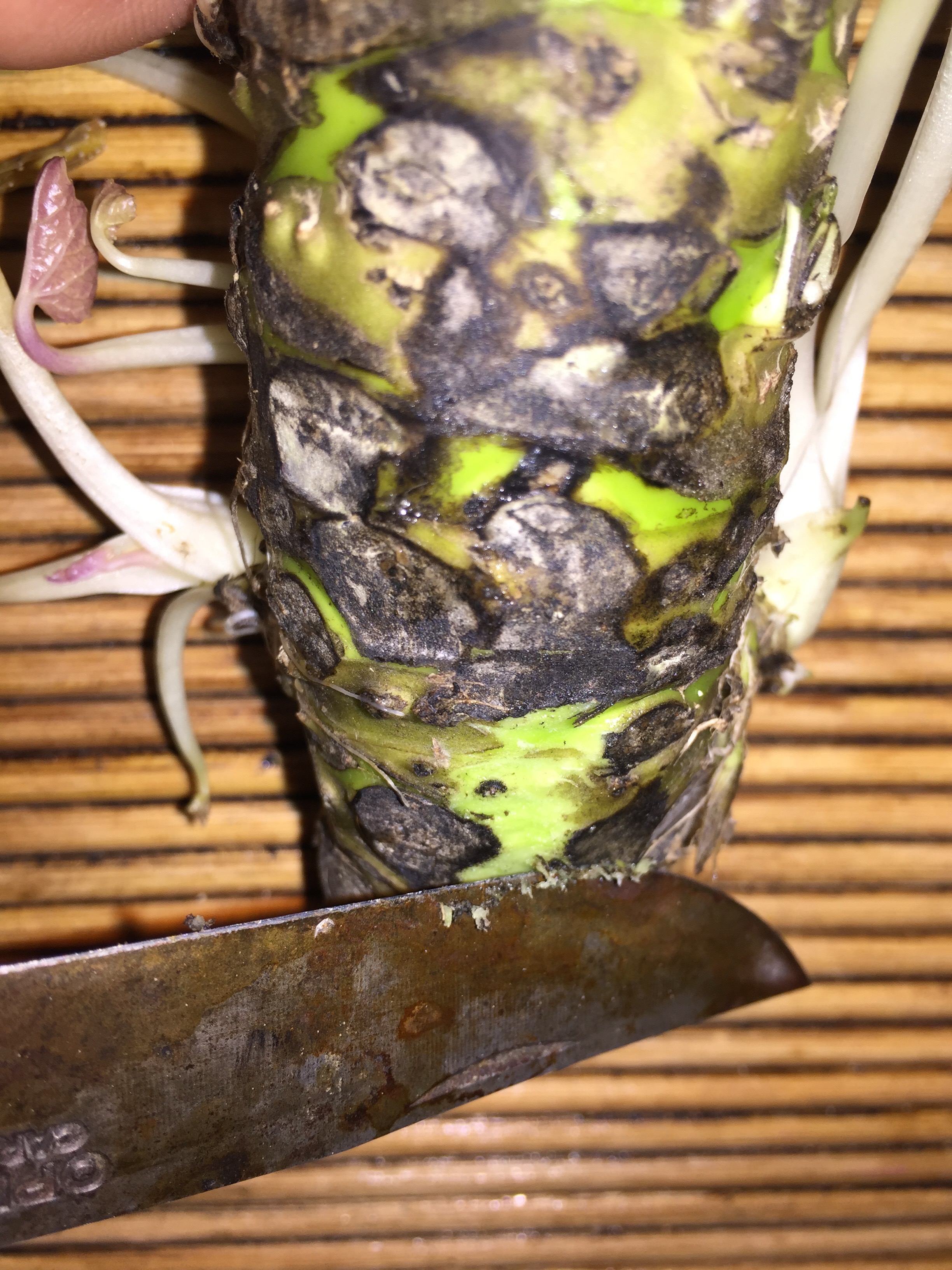Crib notes from this entry: the black is just oxidization and actually seals in flavor and heat. The white shoots are edible and quite tasty. Order more wasabi than you think you'll immediately use because it should last for two months - and once you have the fresh, hot, real wasabi you'll use it more in your cooking (see this page for the many culinary uses). Before devouring this entry, I recommend reading the preceding entry, How Long Does It Last (Part I) for reference. That referential entry anecdotally describes the wasabi rhizome's preservation ability. In that post/entry, I described informing demo customers that the wasabi rhizome they just sampled was stored in the refrigerator for two months. We also provided a comparison to freshly-harvested with no discernible flavor difference. This entry (Part II), shows what a two-month old rhizome looks like, preparation, presentation and an unexpected spontaneous gift from the wasabi rhizome.
The below rhizomes are over two months old and were placed in the bottom of a standard residential refrigerator vegetable drawer bin and frankly, neglected. They were moved about, jostled and shoved aside after each week's farmers' market trip to make room for beets and summer greens. They were wrapped in a (at one time damp) paper towel in a plastic bag; which comprises the basics of our recommended storage procedure. The white shoots all grew without the benefit of photosynthesis and is typical of post-harvest wasabi starting at about six weeks (see this recent entry about planting wasabi plant starts with white shoot growth). Bonus, unexpected, spontaneous gift: the white shoots are edible and actually quite tasty. But that's not the purpose of this post, but was included in this previous entry. So, your long-in-the-tooth wasabi in the bottom of the refrigerator is still fine to grate up, will still pack a heat and flavor punch and has these delicious little flavor-packed shoots that your guests likely have never seen or tasted and will be a great dinner conversation topic. So, go ahead, order a bit more wasabi rhizome than you expect to use immediately and keep it until (from now) Christmas or longer. It'll be fine and you can grow fun, edible (and safe) things in your refrigerator!
For reference, below is a package of freshly-harvested wasabi rhizomes from Frog Eyes Wasabi Farm
The black is an oxidization layer that is naturally-forming and does NOT indicate spoilage. Actual wasabi rhizome spoilage will be white or grey-colored and will be very stinky. (Wasabi is a member of the brassica family which also includes broccoli; imagine stinky broccoli and magnify.) Shown below is the preserved wasabi under the oxidized layer
Essentially, if the wasabi does not stink; eat it. The oxidization is millimeters thin and is shown below. Though difficult to see, this rhizome tip is actually cutaway (reference the thin cut line about mid-point in the rhizome orientated top-to-bottom).
This oxidization layer is nature's natural flavor wrapper. It's edible - though for flavor sake I don't recommend eating it - it is not mold. The wasabi rhizome essentially seals itself from the degratory effects of oxygen. Think of it as nature's Rustoleum (trademarked / etc. I'm sure). I typically scrape it off with the back of a knife. A standard peeler can also be used, though I this usually removes more rhizome flesh than I would prefer.
To use these older rhizomes, remove the amount remove the oxidization from the length of rhizome that you want to grate as shown below. Wrap these rhizomes back up in the same damp paper towel in the same plastic bag and I would imagine that they would be good for another month or so. The cut area of the grated area will re-oxidize and reseal the rhizome. Just remember remember to not put it at the very very back of the refrigerator because it can freeze and that will make the rhizome mushy. Freezing will affect the consistency and it will reduce the flavor as the heat. These qualities are retained in the cell walls, which, once broken releases the heat and flavor. The water inside the cells is released by the freeze-related expansion. It's like the cracks in a mason jar glass that was completely with water and put it in the freezer.
So everyone, enjoy your wasabi and don't be afraid to buy more than you might need because shipping is expensive and the rhizomes will last for a long time and it will grow these white shoots you can put on a dish and people will be rather amazed - and we hope, quite pleased as well.







